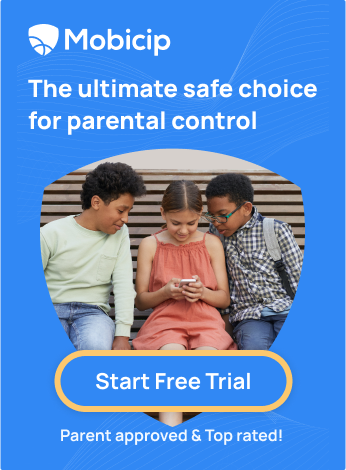EdTech: How to Prioritize Responsible Tech Use in Education

Investopedia defines EdTech as “Hardware and software designed to enhance teacher-led learning in classrooms and improve students’ education outcomes. Define EdTech and its growing influence in education.” Today, smart devices and IoT tools extend the classroom beyond four walls, allowing students to engage with lessons from anywhere. Behind the scenes, machine learning helps automate grading, while blockchain can track assignments and ensure academic honesty. The possibilities seem endless.
But with this rapid innovation comes a critical question: Are we moving too fast without fully considering the consequences? As EdTech tools flood the market, schools and parents face a dual challenge—embracing the benefits of innovation while ensuring that technology use remains safe, ethical, and age-appropriate. That’s where responsibility comes in. We can’t afford to sacrifice student well-being at the altar of innovation. We must prioritize thoughtful, balanced tech use that enhances education without compromising safety.
Mobicip, a trusted parental control and digital safety platform, is at the forefront of this mission. Whether it’s filtering inappropriate content, managing screen time, or monitoring device use, Mobicip helps make EdTech both powerful and responsible.
In this article, we’ll explore the hidden risks of EdTech, and how we can make smarter choices to protect the next generation of learners.
The Role of EdTech in Modern Education
EdTech has emerged as a powerful force reshaping how students learn, engage, and grow. One of its most celebrated benefits is the potential for scalable individualized learning. Traditional education models often assume that all students absorb information at the same pace and in the same way. But we know that’s far from reality. With EdTech, teachers can personalize lesson plans and learning paths, catering to different styles, paces, and needs—whether a student is a fast learner, needs extra support, or thrives through visual, auditory, or hands-on learning.
Technology also brings accessibility and inclusivity to the forefront. Students with learning disabilities can use speech-to-text tools or screen readers. Those in remote areas can attend classes via virtual platforms. Language translation apps support multilingual classrooms. This means education becomes more flexible, inclusive, and equitable—reaching more learners in more places.
The momentum has been building. Despite being one of the least digitized sectors, education is undergoing a transformation. According to HolonIQ, less than 4% of global education spending goes toward digital tools—but that’s changing fast. The global EdTech market was valued at over $163 billion in 2024 and is poised for significant growth. As AR/VR and AI become more integrated, we’re seeing smarter, more immersive learning experiences.

Image reproduced without modification from here.
Real-World Examples of EdTech Use
From virtual biology dissections to AI tutors offering real-time feedback, the future of learning is not just digital—it’s dynamic. Some real-world examples of EdTech use are:
- Virtual Field Trips with VR: Schools are using platforms like Google Expeditions or Nearpod VR to take students on virtual field trips to historical landmarks, outer space, or inside the human body. No permission slips required.
- Flipped Classrooms with Video Tools: Teachers record lessons using tools like Edpuzzle or Screencastify and assign them as homework. This allows students to learn at their own pace at home and use classroom time for deeper discussion and problem-solving.
- Gamified Learning for Math and Reading: Elementary schools often use apps like Khan Academy Kids, Prodigy, or ABCmouse to teach core subjects through fun, interactive games that reward progress and keep students motivated.
- Speech-to-Text for Students with Learning Disabilities: Tools like Dragon NaturallySpeaking and Google’s Voice Typing help students who struggle with writing. They allow them to dictate their thoughts and assignments out loud.
- Data-Driven Teaching Decisions: Platforms like Classcraft and PowerSchool offer teachers dashboards with analytics on student engagement, performance trends, and areas where learners may need extra help.
- Remote Learning Access in Underserved Areas: IoT-enabled tablets with preloaded learning content are being used in rural or low-connectivity areas. This allows students to continue learning even without consistent Internet access.
Ethical Considerations in EdTech
While EdTech tools offer incredible potential for innovation, they also bring about significant challenges.
Data Privacy and Security
With the increasing amount of data collected by EdTech platforms—ranging from academic performance to personal behaviors—it’s essential to safeguard this sensitive information. Ensuring that student data is securely stored and handled is a top priority for any EdTech platform.
Equity in Access
The digital divide remains one of the most significant challenges in education today. Many students, especially in rural or low-income areas, lack access to reliable internet and modern devices. This disparity could widen existing educational gaps, preventing some students from fully participating in the digital learning revolution. To promote equity, schools, governments, and tech companies must work together to provide affordable access to devices, stable internet, and digital literacy programs.
Content Moderation and Safety
Teachers and parents must ensure that students access age-appropriate and educationally beneficial online content, platforms must implement strong content moderation systems, such as real-time filters, website blocking, and customizable safety settings.
Teacher Autonomy and Control
As schools integrate more EdTech tools into classrooms, they must ensure that teachers retain control over their teaching methods. Technology should support, not replace, teachers’ expertise. Over-reliance on algorithms and automated systems can undermine teachers’ ability to make nuanced decisions that best serve their students. EdTech should be designed as a tool to enhance, not constrain, educators’ autonomy.
Algorithmic Bias
Many EdTech platforms use machine learning and AI, which are prone to biases if not carefully managed. Algorithms may unintentionally perpetuate inequalities, particularly for students from underrepresented or marginalized groups. EdTech companies must identify and eliminate biases in their systems. This ensures fair and equitable experiences for all students, regardless of background or learning needs.
Mental Health
Excessive screen time and digital distractions can have a negative impact on students’ mental health. With the growing concern about digital addiction, it’s important for EdTech tools to promote balance and well-being. Features like screen-time reminders and breaks from digital activities can help mitigate these risks.
Informed Consent
Parents, teachers, and students must understand how their data is being used. Informed consent must be a cornerstone of EdTech platforms, ensuring that all stakeholders are aware of what data is collected, how it is stored, and who has access to it. Clear and accessible privacy policies can foster trust and transparency, helping to establish a responsible digital learning environment.
Sustainability
Another often-overlooked ethical issue is the environmental impact of EdTech. From e-waste to energy consumption, the tech industry contributes significantly to environmental degradation. EdTech companies should design sustainable, energy-efficient devices and promote responsible recycling practices to reduce their ecological footprint.
Challenges in Implementing Responsible EdTech
Implementing responsible EdTech in educational settings comes with several challenges that need to be addressed for successful integration. These challenges include:
Resistance to Change
Many educators and schools are hesitant to adopt new technology. They may be comfortable with traditional methods and fear that EdTech could disrupt their teaching practices or be too difficult to integrate into existing curricula. The reluctance to change is often compounded by a lack of proper training and professional development in using digital tools effectively. Without sufficient support and guidance, the transition to tech-integrated classrooms can be overwhelming for educators, ultimately impacting the overall adoption of responsible EdTech.
Lack of Awareness
There is often a gap in understanding the ethical implications of EdTech. Teachers, administrators, and even parents may not fully comprehend the potential risks related to data privacy, security, or equity in access. Without awareness of these concerns, schools may unknowingly adopt tools that do not prioritize student safety or inclusivity. This lack of awareness can lead to the unintentional misuse of technology, which may expose students to online risks or reinforce digital divides, ultimately detracting from the educational experience.
Financial Constraints
Many schools, especially in underfunded districts, struggle to afford high-quality EdTech solutions. While some tools offer great potential for personalized and safe learning, they come with price tags that may be out of reach for schools with limited budgets. This financial strain can hinder the implementation of responsible EdTech tools that ensure a secure and equitable digital learning experience. Without affordable solutions, schools may rely on cheaper, lower-quality tools that may lack necessary safety features, compromising the overall educational outcomes.
Misuse of EdTech
One of the most significant challenges is the potential misuse of technology in the classroom. While EdTech can offer numerous benefits, improper use can lead to negative outcomes such as disengagement, distraction, and even misuse of student data. For example, excessive screen time or reliance on gamified learning may reduce meaningful face-to-face interactions, hindering social and emotional development. Additionally, if students are exposed to inappropriate content or unethical digital practices, the potential for harm increases. Without proper safeguards, the misuse of technology can result in poor student outcomes, including a decline in academic performance, emotional distress, or even behavioral issues. Therefore, it’s critical to integrate technology responsibly and monitor its impact closely to ensure it supports positive learning outcomes.
How Mobicip Can Help
Mobicip offers an effective solution to address the challenges associated with implementing responsible EdTech. By providing a comprehensive set of tools, Mobicip ensures that both parents and educators can foster a safe digital learning environment. It helps overcome resistance to change by offering easy-to-use features that seamlessly integrate into existing routines and platforms. Additionally, Mobicip raises awareness about data privacy and security, incorporating built-in protections to safeguard student information. For schools facing financial constraints, Mobicip provides affordable plans with a wide range of safety features, ensuring responsible technology use is accessible to a broad audience. Here are some of its features that can ensure safe, responsible, and inclusive EdTech use in both home and school settings.
- Screen-Time Management: Set daily limits and schedules for screen time, promoting a healthy balance between digital and offline activities.
- Content Filtering: Block inappropriate websites and apps, ensuring that students engage only with age-appropriate content.
- Activity Monitoring: Track browsing history and app usage, allowing parents and educators to monitor students’ online engagement.
- Location Tracking: Utilize GPS to keep track of students’ locations, offering an extra layer of security.
- App Management: Control and manage the apps students can access, ensuring that only educational and approved apps are used.
- Customizable Settings: Tailor security features to meet the unique needs of each child, offering personalized protection and a safe learning experience.

The Future of EdTech: Trends and Predictions
Education technology is rapidly evolving, and several key trends are shaping the future of learning:
- Upskilling: As automation and AI transform industries, upskilling and reskilling have become essential. EdTech platforms like Degreed and Workera are helping individuals adapt to an evolving job market, offering flexible, accessible learning solutions. With over 1 billion jobs expected to change due to technology by 2030, these platforms will continue to play a crucial role in workforce development.
- Personalizing Learning Experiences: AI is revolutionizing education by enabling tailored learning experiences. Predictions show the AI in education market will grow by $21 billion by 2028. AI tools like Amira Learning and Sizzle AI are customizing lessons to meet individual needs while also streamlining administrative tasks, enhancing both engagement and learning outcomes.
- Talent: A new wave of talent is entering the EdTech sector, with industry veterans from tech giants launching innovative startups. Entrepreneurs such as Kyron’s Rajen, Sizzle’s Jerome Pesenti, and Maximal Learning’s Eran Megiddo are transforming the education space, pushing boundaries and creating new possibilities for digital learning.
- Mental Health: The pandemic highlighted the importance of mental health, and EdTech is responding. Platforms like Hazel Health and Woebot are offering emotional support and helping students manage stress, ensuring that well-being is prioritized alongside academics.
- Outcomes: With EdTech’s rapid growth, the focus is shifting toward measurable outcomes. Developers are creating tools to track progress and improve learning, ensuring that educational technology remains effective and impactful.
Emerging trends like AI, AR/VR, and blockchain are transforming education by offering personalized learning experiences, immersive content, and secure record-keeping. AI tailors lessons to individual needs, AR/VR enhances engagement with interactive experiences, and blockchain ensures secure, verifiable academic credentials, making learning more dynamic and accessible.
Conclusion
As we stand on the precipice of a digital revolution in education, it’s clear that technology has the power to reshape the very fabric of how we learn. Yet, with such immense power comes the responsibility to wield it wisely. EdTech promises more equitable, accessible, and personalized learning—not just enhanced education. Yet, with this potential comes the responsibility to use it wisely. From AI tutors to virtual field trips, EdTech can enhance education, but it also raises concerns about privacy, screen time, and the digital divide.
The key is balance. We must use technology thoughtfully, ensuring it enhances learning without compromising student well-being. Tools like Mobicip help manage screen time, filter content, and protect data, ensuring EdTech serves its true purpose: to support and improve education. By moving forward with caution and responsibility, we can make sure technology contributes to a brighter, more inclusive future for all learners.
LSI Keywords: personalized learning, digital divide, ethical EdTech, AI in education, AR/VR in classrooms, data privacy in schools, content moderation tools, inclusive education technology, responsible innovation, future of learning.
Entities: Mobicip, AI-driven learning tools, adaptive learning platforms, gamification in education, blockchain in EdTech, regulatory frameworks for EdTech, digital safety solutions.





